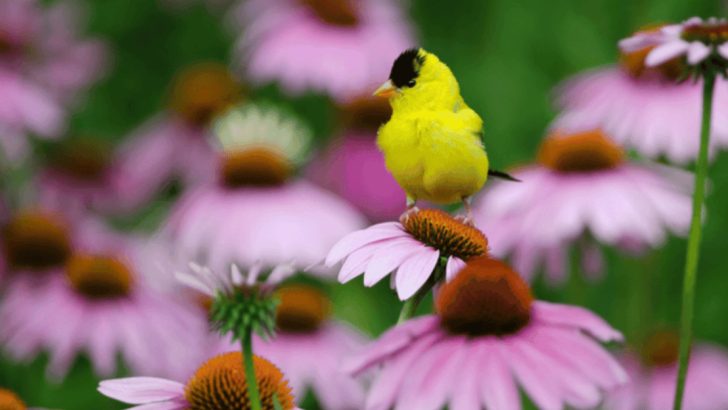Want to invite more feathered friends into your garden? These 12 gorgeous plants are not only stunning but also provide food, shelter, and nesting spots for birds. Transform your outdoor space into a lively bird haven with these must-have plants!
Sunflower (Helianthus annuus)
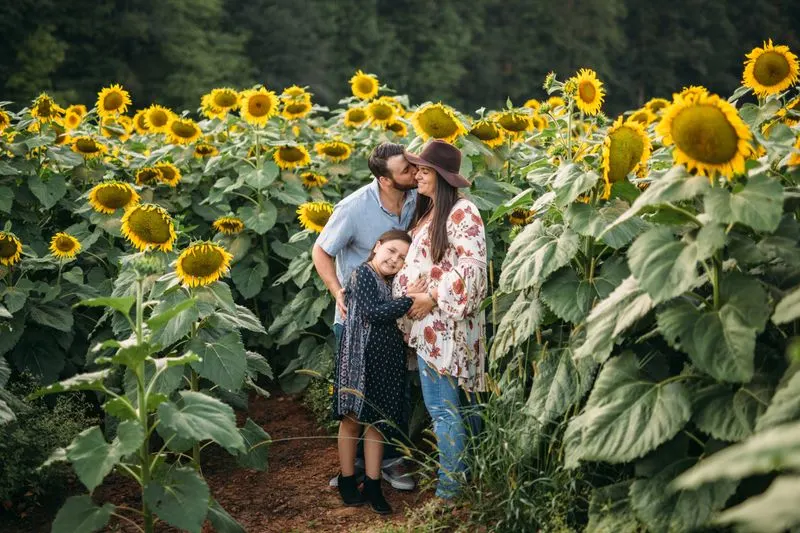
Sunflowers are a favorite among birds, especially finches, who relish the seeds embedded within the large, striking blooms. These towering flowers not only add height and vibrancy to your garden but also serve as a natural bird feeder. Plant them in a sunny spot, and they’ll thrive, attracting winged visitors from miles around. With their cheerful appearance, sunflowers also bring a touch of summer brilliance to any garden space. They are easy to grow and maintain, making them a superb choice for gardeners at any skill level.
Bee Balm (Monarda didyma)
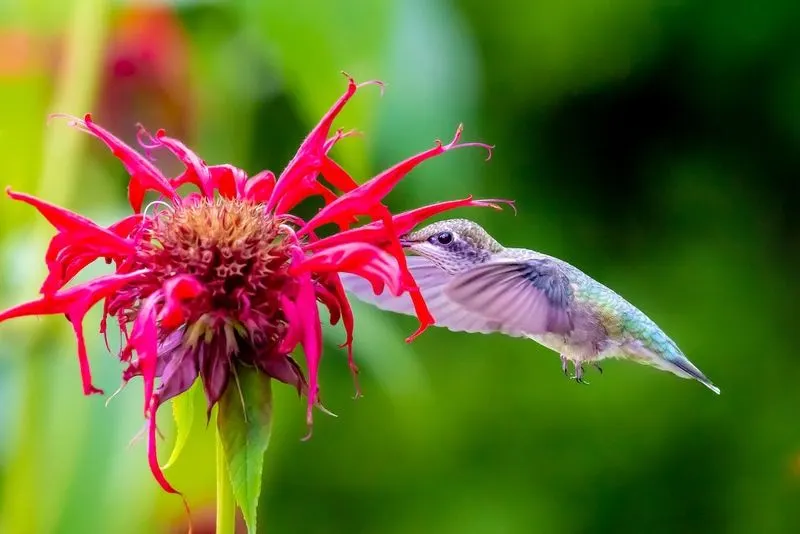
Bee Balm captivates with its fiery red blooms and minty aroma, drawing in hummingbirds and butterflies alike. This perennial plant thrives in sunny areas and moist soil, ensuring a lively garden scene throughout the blooming season. The tubular flowers are designed perfectly for hummingbirds to sip nectar, while also providing seeds for small birds. It’s a splendid addition for those seeking a dynamic, colorful garden that buzzes with life. Whether in borders or containers, Bee Balm makes an impressive impact.
Holly (Ilex spp.)
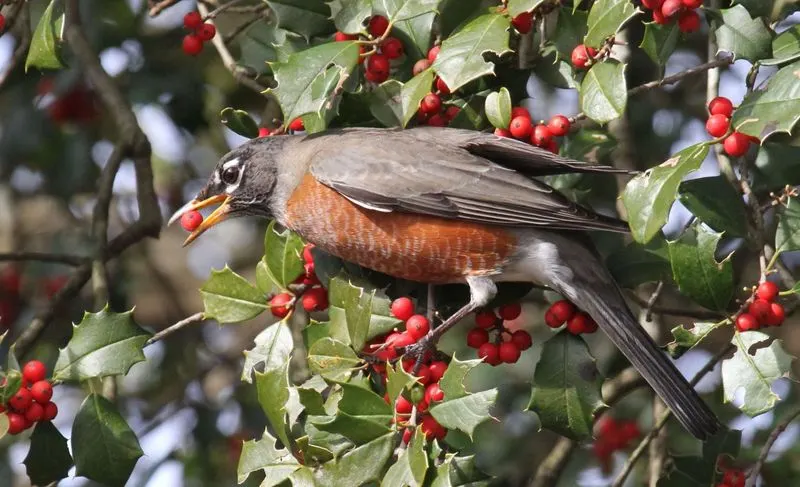
Holly bushes are more than just festive decor; they offer sustenance to birds with their bright red berries throughout winter. Species like the American Holly provide essential winter food for birds, such as thrushes and waxwings. The dense foliage also offers shelter and nesting sites. With its striking evergreen leaves and vibrant berries, holly adds visual interest to gardens year-round. This hardy plant can grow in various soil types and conditions, making it a versatile choice for bird-friendly gardens.
Coneflower (Echinacea)
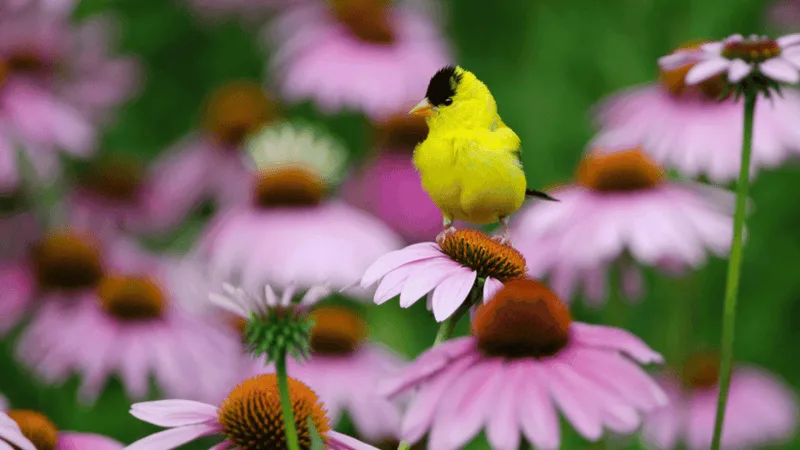
Coneflowers, known for their daisy-like appearance and prominent seed cones, attract birds and pollinators in droves. Goldfinches and other small birds feast on the seeds, while the vibrant flowers bring a splash of color to the garden. Drought-resistant and easy to care for, coneflowers thrive in sunny locations. Their long-lasting blooms offer a continuous food source and visual appeal from midsummer to fall. As a bonus, they also make excellent cut flowers for indoor arrangements, adding a touch of nature inside.
Elderberry (Sambucus)
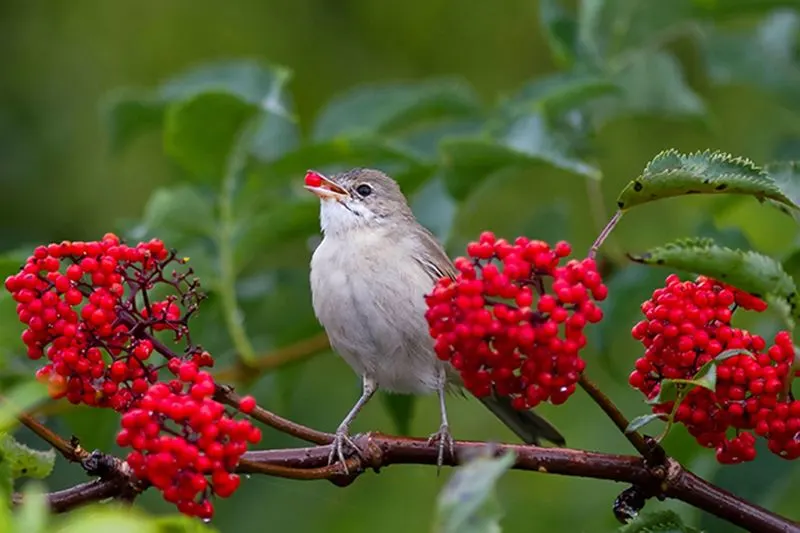
Elderberries are rich in nutrients, enticing birds with their dark, juicy fruits that appear in late summer. Birds like robins and waxwings flock to these shrubs for a feast. Elderberries are versatile, thriving in various soil types and providing natural hedging. Their delicate white flowers in spring add to their ornamental value, while the berries support wildlife. With elderberries, you’re not only offering birds a treat but also enhancing your garden’s biodiversity. They make a great addition to a wildlife-friendly garden.
Serviceberry (Amelanchier)
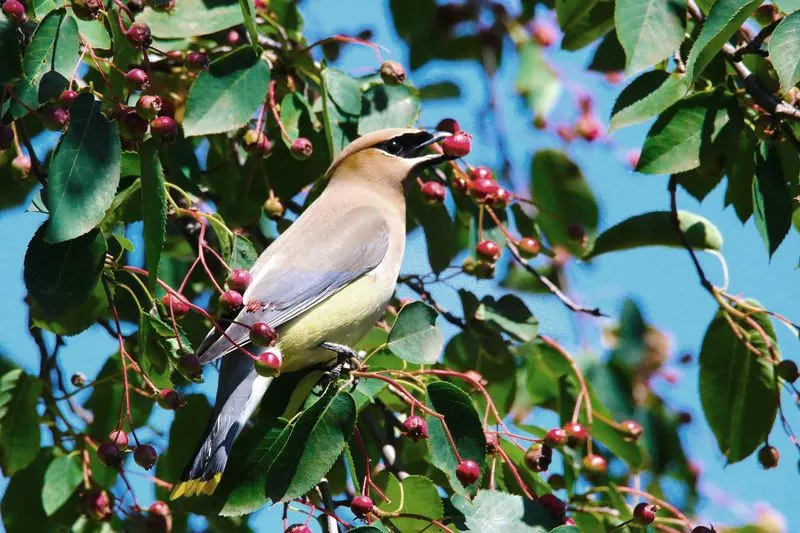
Serviceberries, with their sweet, edible fruits, are a beacon for a variety of birds. These trees bloom with delicate white flowers in spring, providing early nectar sources for bees. As summer arrives, the berries ripen into a deep purple, attracting birds like thrushes and robins. The foliage turns brilliant shades of orange and red in autumn, offering seasonal interest. Serviceberries can be planted as small trees or shrubs, fitting seamlessly into different garden landscapes. Their multi-season appeal makes them a valuable addition to any bird-friendly garden.
Cardinal Flower (Lobelia cardinalis)
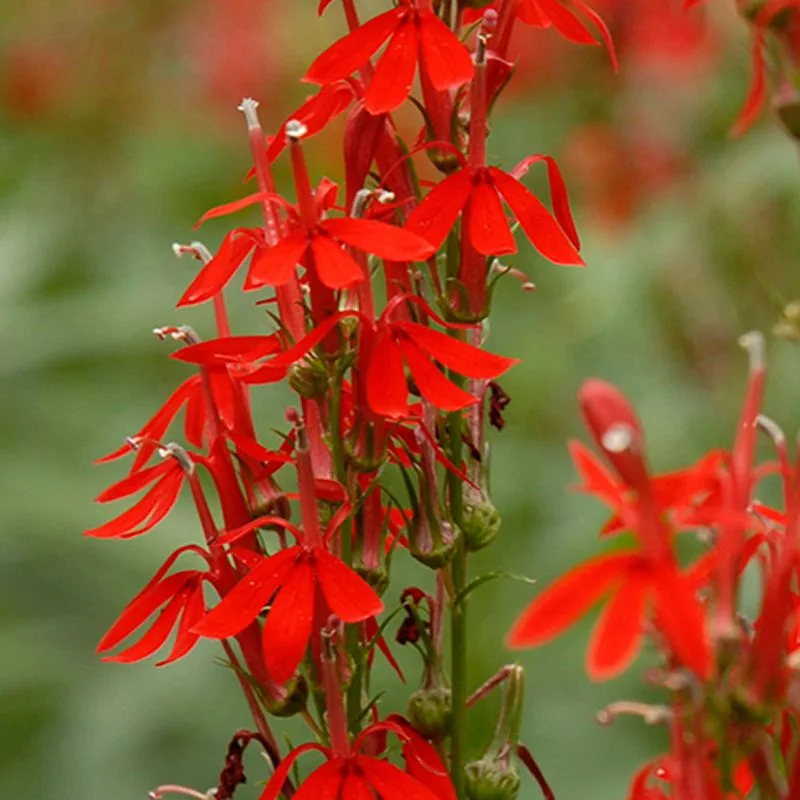
Cardinal Flowers boast vivid red blossoms that are particularly attractive to hummingbirds. These native wildflowers thrive in moist, shaded environments, making them perfect for damp spots in your garden. The tall spikes of tubular flowers bloom in late summer, offering nectar when few other plants are in flower. Their striking color and form make them a standout feature in any garden. Cardinal Flowers require minimal maintenance and can naturalize in wet areas, providing lasting beauty and bird attraction.
Black-eyed Susan (Rudbeckia hirta)
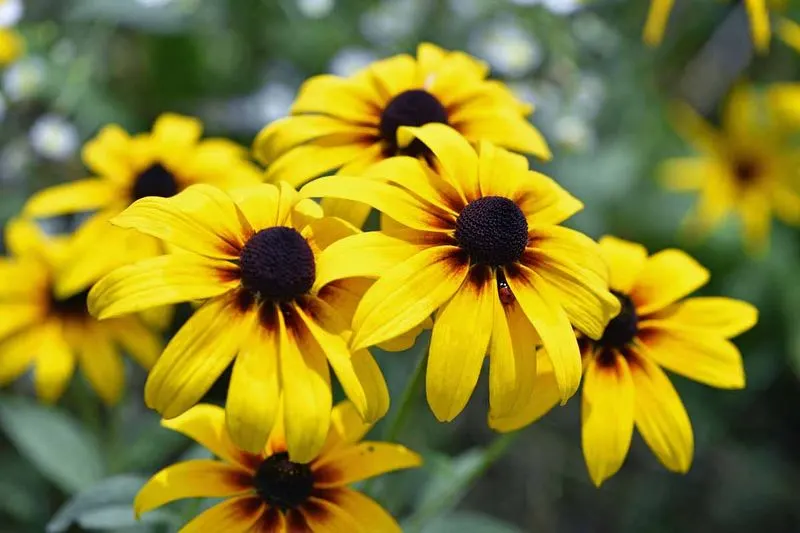
Black-eyed Susans are celebrated for their bright yellow petals and dark centers, drawing birds like finches and sparrows. These hardy perennials bloom from midsummer to fall, providing seeds that sustain birds through the season. Their cheerful appearance brightens up any garden, while the plant’s tough nature means it can withstand varying conditions. Ideal for borders or mass plantings, Black-eyed Susans offer both beauty and ecological benefits. They’re also drought-tolerant, making them resilient garden companions.
Mountain Ash (Sorbus aucuparia)
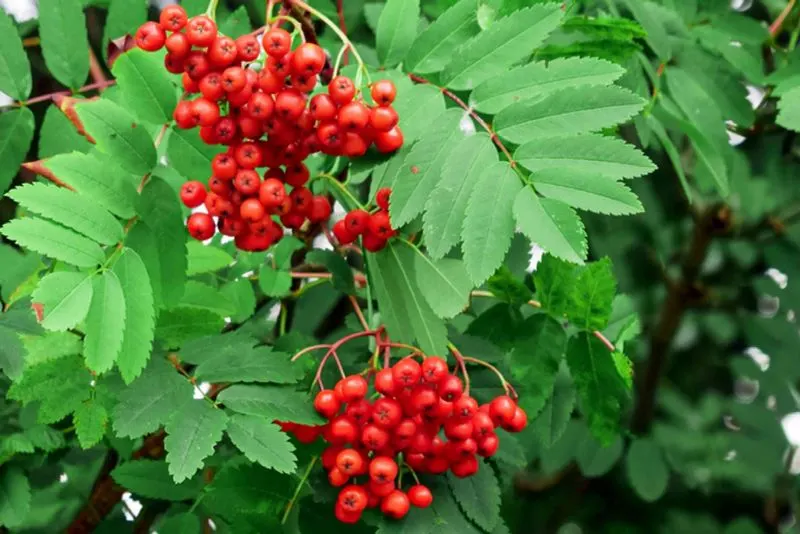
Mountain Ash trees are a magnet for birds with their abundant clusters of orange-red berries. Thrushes and waxwings are particularly fond of these fruits. The tree’s graceful form and vibrant autumn foliage add significant visual interest to landscapes. Mountain Ashes are adaptable to different soil conditions, thriving best in well-drained locations. Their flowers attract pollinators in spring, while the berries provide essential food for birds in late summer and fall. A Mountain Ash can serve as a centerpiece in a bird-friendly garden.
Crabapple (Malus spp.)
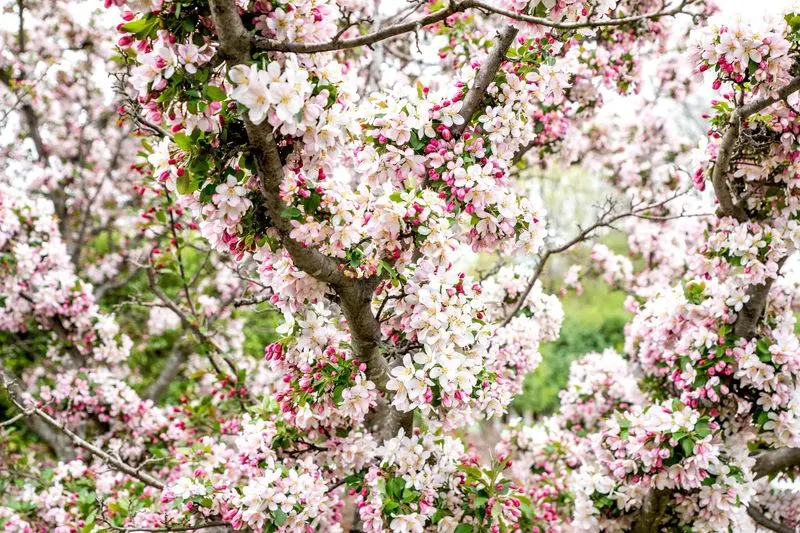
Crabapple trees offer a feast for the senses and for birds. Their flowers bloom in a riot of colors in spring, attracting bees and other pollinators. As the seasons change, small red fruits emerge, drawing in birds like robins and waxwings. These fruits persist into winter, providing a vital food source when other options are scarce. The diverse species and cultivars mean there’s a crabapple for every garden size and style. Besides bird appeal, they offer stunning year-round aesthetics with their form, blooms, and fruits.
Chokeberry (Aronia)
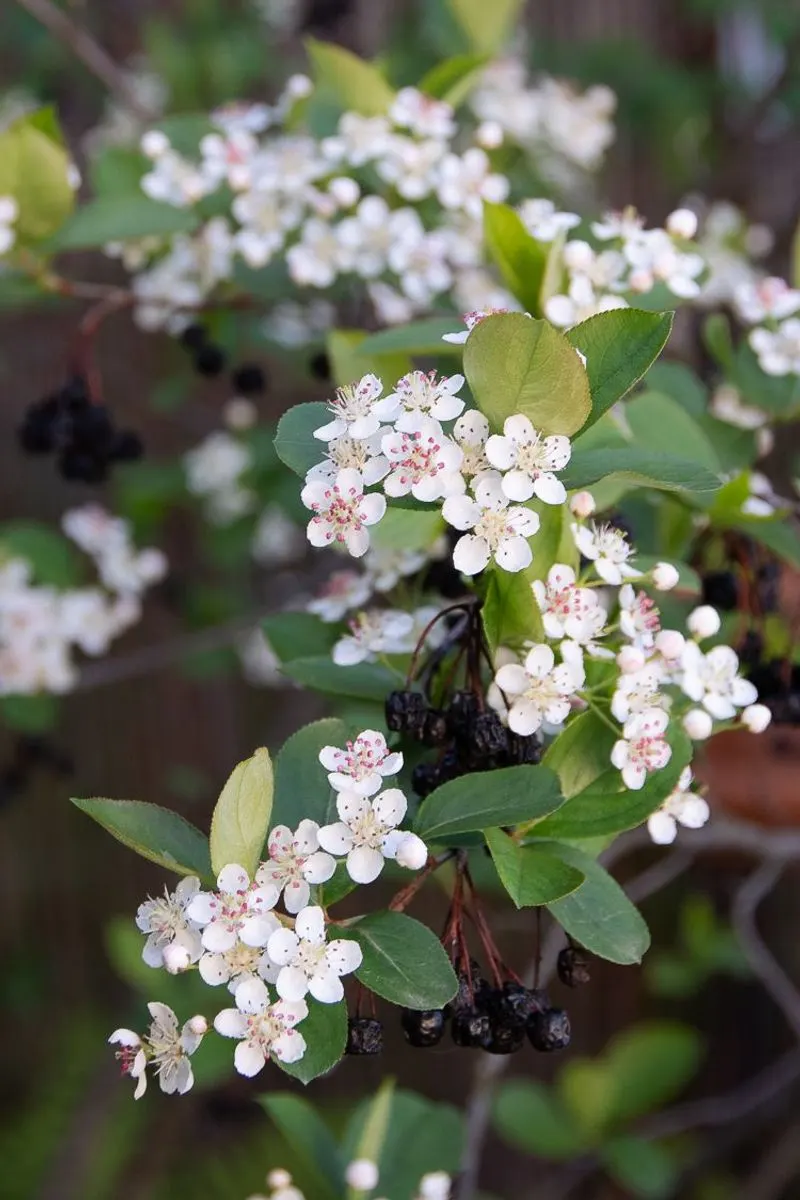
Chokeberries, with their glossy black fruits, are a favorite among birds such as starlings and thrushes. These shrubs are hardy, easy to grow, and adaptable to various conditions, including wet soils. In spring, they produce clusters of white flowers, which develop into berries by late summer. Beyond bird attraction, chokeberries offer striking autumnal foliage, transitioning to fiery reds and oranges. Their multi-season appeal and resilience make them a fantastic choice for those looking to support wildlife while beautifying their garden.
Hawthorn (Crataegus)
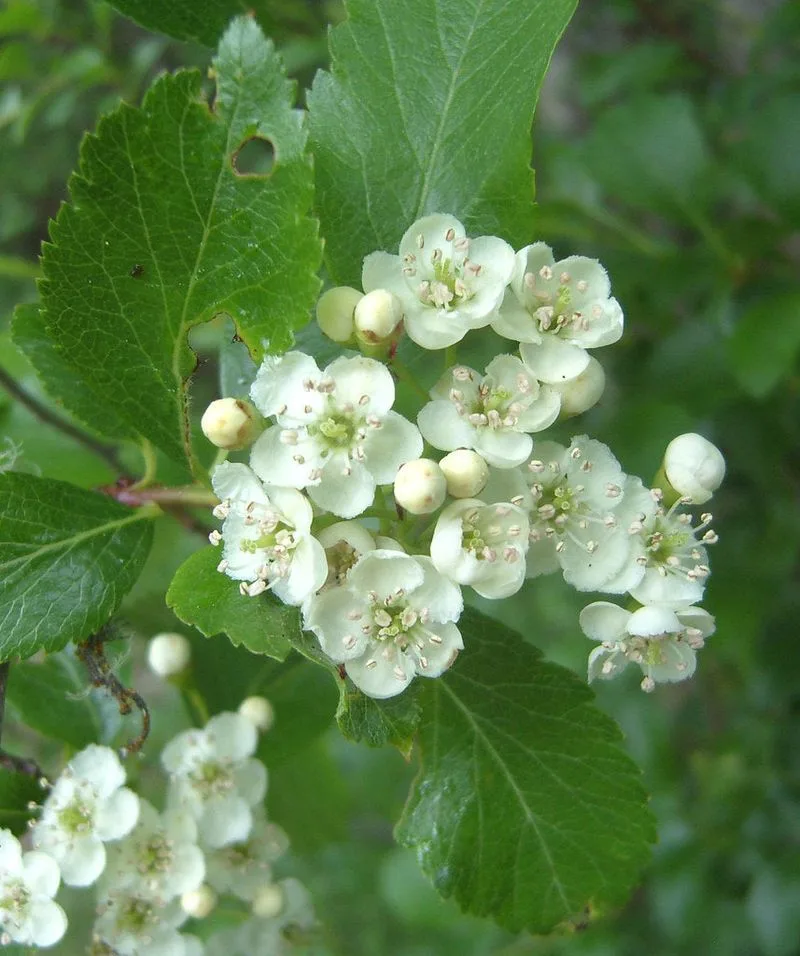
Hawthorn trees are a boon for wildlife, with dense branches perfect for nesting and red berries that draw in numerous bird species. The trees bloom with white flowers in spring, attracting pollinators and ensuring a fruitful harvest later. The berries, or haws, ripen in autumn, providing sustenance for birds during the colder months. Durable and adaptable, hawthorns thrive in various soil types and can withstand harsh conditions. They provide not only food and shelter but also add an element of rustic charm to gardens.

